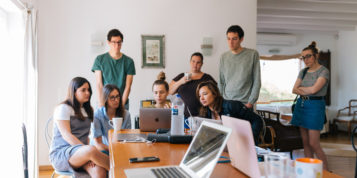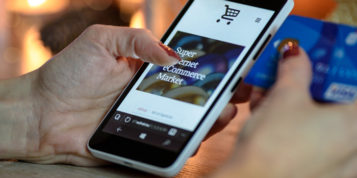Let’s face it, the creative sector can offer a vibrant and fun working environment, but it can also be a distracting place. From scrolling through Twitter when updating a client’s social media, to promoting one’s own personal brand when liking a company’s post, there are a lot of tools professionals work with that can easily turn into time consuming distractions.
That isn’t necessarily a bad thing – and it’s arguably one of the attractive parts of working in this industry – but when it starts to impact how a person get the job done, it needs to be addressed. So, what can businesses do to limit these distracting practices from their business?
Recognising temptation
The challenge with these workplace temptations is how easily they’re associated with the day-to-day role. For example, if employees are looking through the paper for industry background, it’s not hard to get drawn into reading an irrelevant article. There’s nothing wrong with this; in fact, these mini-breaks can help keep your people refreshed throughout the day. The problem comes when these breaks are no longer small, and instead take over from important work.
These industry temptations can be a bit of a black hole where staff time is concerned, so recognising where they lie is the first priority in limiting their impact on staff productivity. Once you know where the problem areas are, the next step is keeping your team focused on the task at hand.
At the same time, it’s important to maintain the fun and positive environment that makes the creative sector – and your individual business – appealing to so many applicants. It’s here that putting a timeframe in place can help strike a healthy balance. If it’s a morning news review for example, limiting the task to half an hour will make sure that your people are focused, but will also give them the freedom to look through other articles if they complete the job with time to spare.
Making social suitable
However, some other tasks are much harder to track. The use of social media in the creative sector is now an integral part of the day-to-day, but as most employees have their own social channels, it’s something that can easily get out of hand. Encouraging your people to look at social with a more professional eye is important to avoid the workplace temptation of updating their status throughout the day.
It goes back to communication. Making sure managers clearly outline how and when social is used will not only help employees remain focused when doing client work, but will also help them complete the task far more effectively. This transparency will also help build a mutual respect with your staff, giving anyone facing temptation a reason to remain focused.
It’s also about empowering your people. Instead of just having managers crack the whip on social media, getting the wider team to feel responsible for the tasks they do will make sure they prioritise and deliver to the client. After all, if an employee feels a sense of ownership in their role, they’ll be more inclined to deliver these tasks to a high standard.
Making work/life better
If these strategies are in place and staff are still finding it difficult to remain focused, there may be a wider issue at play. It may be that you’re struggling to deliver a healthy work-life balance. Staff who become distracted in the workplace could be dealing with personal responsibilities or general ‘life admin’ that they haven’t managed to do outside of work. If this is the case, the business should be looking to improve where the team draws the line between work and home in order to limit workplace distractions.
This is where a review of the company’s processes may come into play. If your people are spending too much time in the office – whether they’re coming in too early or leaving really late – then perhaps it’s time to implement a cut-off point. Managers should support this through leading by example and setting deadlines within the contracted hours. In the long run, this will reduce distraction as your people will be able to manage their work and personal tasks more effectively. An improved work-life balance will also make sure the team stay positive, maintaining that fun and enthusiastic atmosphere so many businesses in the creative sector strive for.
With the creative industry being such a vibrant place to work, it’s no wonder staff may get distracted when doing their job. However, making sure there are clear guidelines in place, as well as processes which reduce the chance for the team to tempted by the tools they have at their disposal, will help overcome this challenge. It’s still important to build a fun atmosphere, so keeping staff happy, and making sure they’re not overworked is important to maintain – even when trying to cut down on workplace distractions.





